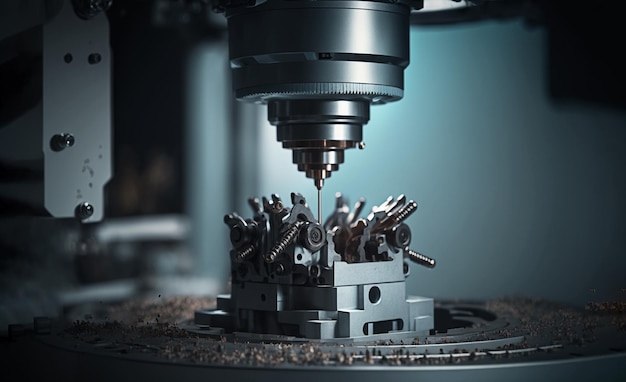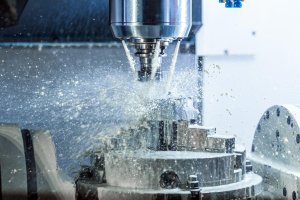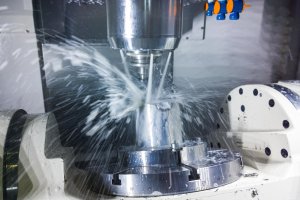Introduction to CNC Precision Machining
CNC precision machining is a process where computer numerical control (CNC) technology directs the operation of machines and tools to achieve intricate manufacturing tasks with high levels of accuracy. The importance of precision in this field cannot be overstated, as it ensures components fit seamlessly into larger systems, reducing material waste and enhancing product reliability. For example, in aerospace manufacturing, even a microscopic deviation can lead to critical failures, emphasizing why precision serves as the cornerstone for quality assurance across countless applications.
The Process of CNC Machining
In the realm of CNC precision machining, the journey from concept to finished product begins with the initial design phase, commonly executed using Computer-Aided Design (CAD) software. This powerful tool enables designers and engineers to construct detailed 3D models that represent the exact specifications of the desired component. Following the CAD stage, the model transitions into the phase of Computer-Aided Manufacturing (CAM), where the raw data is converted into a set of machine-readable instructions or G-code. CAM systems determine the tool paths required to turn the virtual design into a physical part, considering factors like tooling, cutting speeds, and feed rates. Finally, the actual machining process commences, driven by the CAM-generated program: the CNC machine interprets this code to precisely manipulate tools across multiple axes, systematically removing material from a workpiece to manifest the intricacies of the original CAD design.
Types of CNC Machines
CNC precision machining utilizes various types of machines to produce intricate parts with high accuracy. Lathes, a fundamental type, perform by spinning the workpiece against a cutting tool to shape and contour cylindrical components, ensuring symmetry around an axis. In contrast, milling machines are detailed powerhouses, employing rotary cutters to remove material from a workpiece in multiple directions and angles, ideal for complex shapes and features. Similarly, routers specialize in cutting, carving, and hollowing out materials like wood and plastic; they excel in tasks requiring fine detail and artistic designs often found in woodworking projects. Lastly, grinders provide finishing touches, using an abrasive wheel to smooth surfaces to precise dimensions and surface finishes, essential in achieving final product specifications.
Materials Compatible with CNC Machining
CNC machining’s versatility is showcased through its ability to work with a diverse array of materials. Among metals, aluminum stands out for its excellent machinability and strength-to-weight ratio, while stainless steel’s resistance to corrosion makes it an industry staple for more demanding applications. Brass and copper are often chosen for their electrical conductivity and ease of machining. The adoption of plastics in CNC processes has been significant; materials like ABS and polycarbonate offer durability along with reduced weight, opening up design opportunities in sectors such as automotive and consumer electronics. In addition, composite materials, such as carbon fiber-reinforced polymers, provide unmatched strength with minimal weight, beneficial in aerospace and high-performance engineering contexts where every gram matters.
Advantages of CNC Precision Machining
The implementation of CNC precision machining brings forth significant advantages to the manufacturing process, notably its unmatched precision and repeatability. This meticulous accuracy ensures that each part is crafted to exact specifications, which is critical in industries where even slight deviations can lead to product failure. Additionally, CNC machinery promotes remarkable speed and efficiency in production, substantially reducing turnaround times compared to traditional manual processes. The versatility of CNC systems also cannot be overstated; they are capable of producing a myriad of components for various applications, from aerospace engineering intricacies to automotive parts, enabling adaptation across diverse industrial landscapes without compromise on quality.
Challenges in CNC Precision Machining
The realm of CNC precision machining, while offering remarkable accuracy and productivity, is not without its hurdles. One significant barrier is the substantial initial outlay required to acquire advanced machinery, which can dissuade smaller shops from upgrading their capabilities. Equally daunting is the level of technical acumen necessary for operatives to program and handle these sophisticated machines; a steep learning curve can mean investment in staff training or recruiting specialized personnel. Additionally, keeping these precision tools running smoothly necessitates regular upkeep and occasional repairs—a commitment that demands both time and financial resources, along with access to experienced maintenance professionals who understand the intricacies of high-tech CNC systems.
Automation and the Role of AI in CNC Machining
The landscape of CNC precision machining is progressively being transformed by the integration of automation and Artificial Intelligence (AI). Automation elevates efficiency, allowing machines to operate unattended for extended periods with consistent accuracy. AI amplifies this by optimizing machining processes through predictive maintenance and real-time decision-making. For instance, AI algorithms analyze machine performance data to predict tool wear, enabling preemptive replacements before they cause defects. Through advanced sensors and learning algorithms, AI systems adjust cutting conditions dynamically, reducing material waste and improving product quality.
Advanced Materials and Innovative Techniques in CNC Machining
Innovative techniques coupled with advanced materials are setting new benchmarks in CNC machining capabilities. Processes such as high-speed machining and 5-axis milling allow manufacturers to produce complex geometries that were previously unattainable. The employment of materials like titanium alloys and carbon fiber composites presents unique challenges that these advanced techniques overcome with greater ease. Moreover, additive manufacturing technologies like 3D printing are converging with traditional CNC processes to create hybrid approaches, expanding possibilities in custom fabrication and prototyping while maintaining precision and strength in end-use components.
Real-world Application Examples
CNC precision machining has become integral to fabricating components in sectors demanding exacting standards, notably aerospace where every part must conform rigorously to specifications for safety and functionality. For instance, turbine blades in jet engines are crafted with extreme precision to ensure aerodynamic efficiency and resilience at high temperatures. In the medical field, CNC technology is pivotal in producing implants, like hip joints or dental prosthetics, which require complex geometries that fit perfectly within the human body. The automotive industry benefits as well, especially in customizing parts for performance vehicles; gearheads seek bespoke pistons or suspension systems, machined to withstand the stresses of racing while enhancing vehicle dynamics.
Related Posts
- Everything You Should Know About CNC Machining
Computer Numerical Control (CNC) machining was invented more than 50 years ago. This new machining technology has improved precision capabilities and created countless products of different shapes and sizes. Across…
- Elevating Precision Standards through Chamfer in CNC Machining
1. Introduction: The Pursuit of Unparalleled Precision In the realm of CNC machining, precision is paramount. This section introduces the article by exploring the significance of precision in manufacturing and…
- Precision Prowess: Unveiling the Advantages of China CNC Machining
1. Introduction: The Role of Precision in Manufacturing Excellence In this introductory section, we delve into the critical role that precision plays in manufacturing and set the stage for an…








